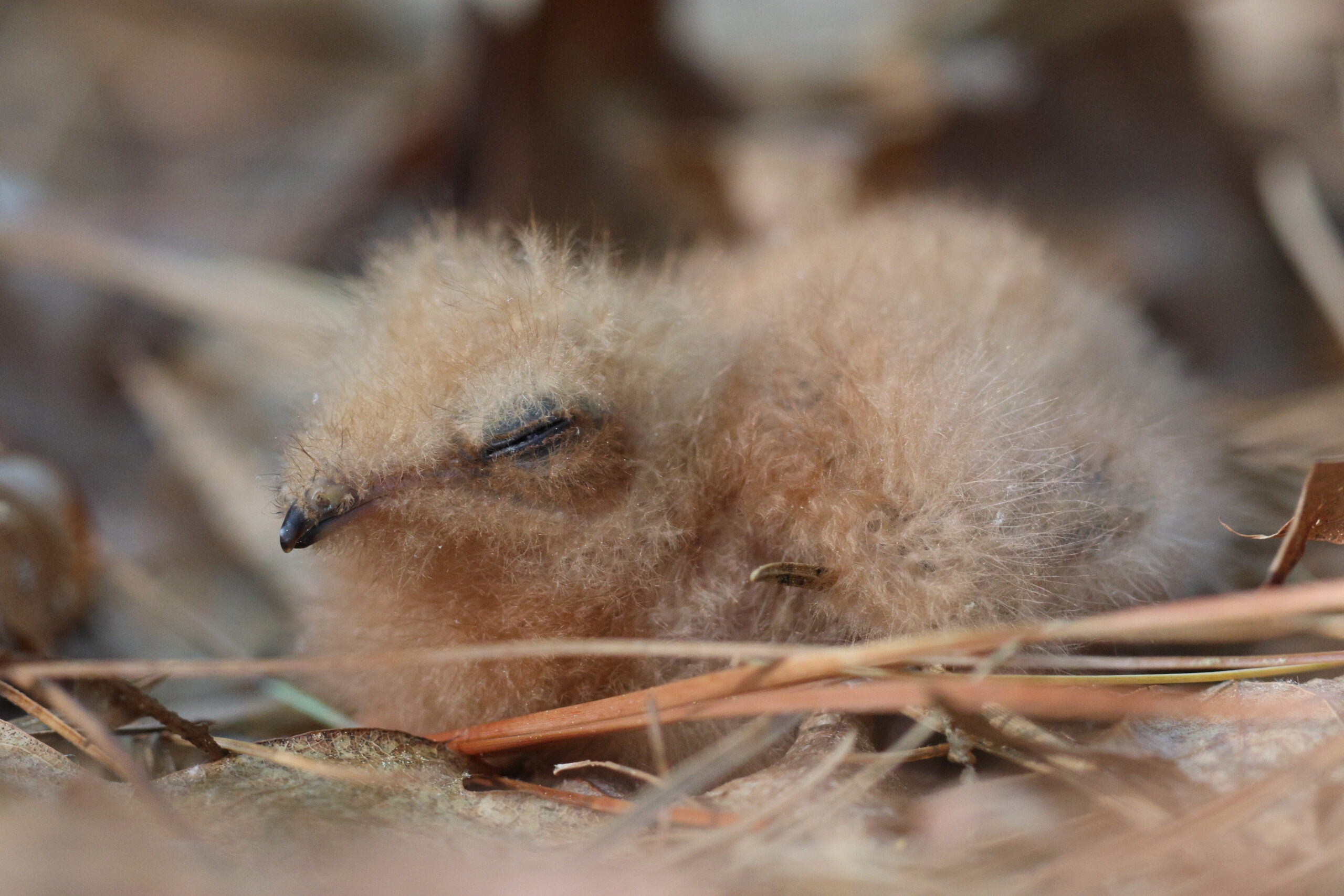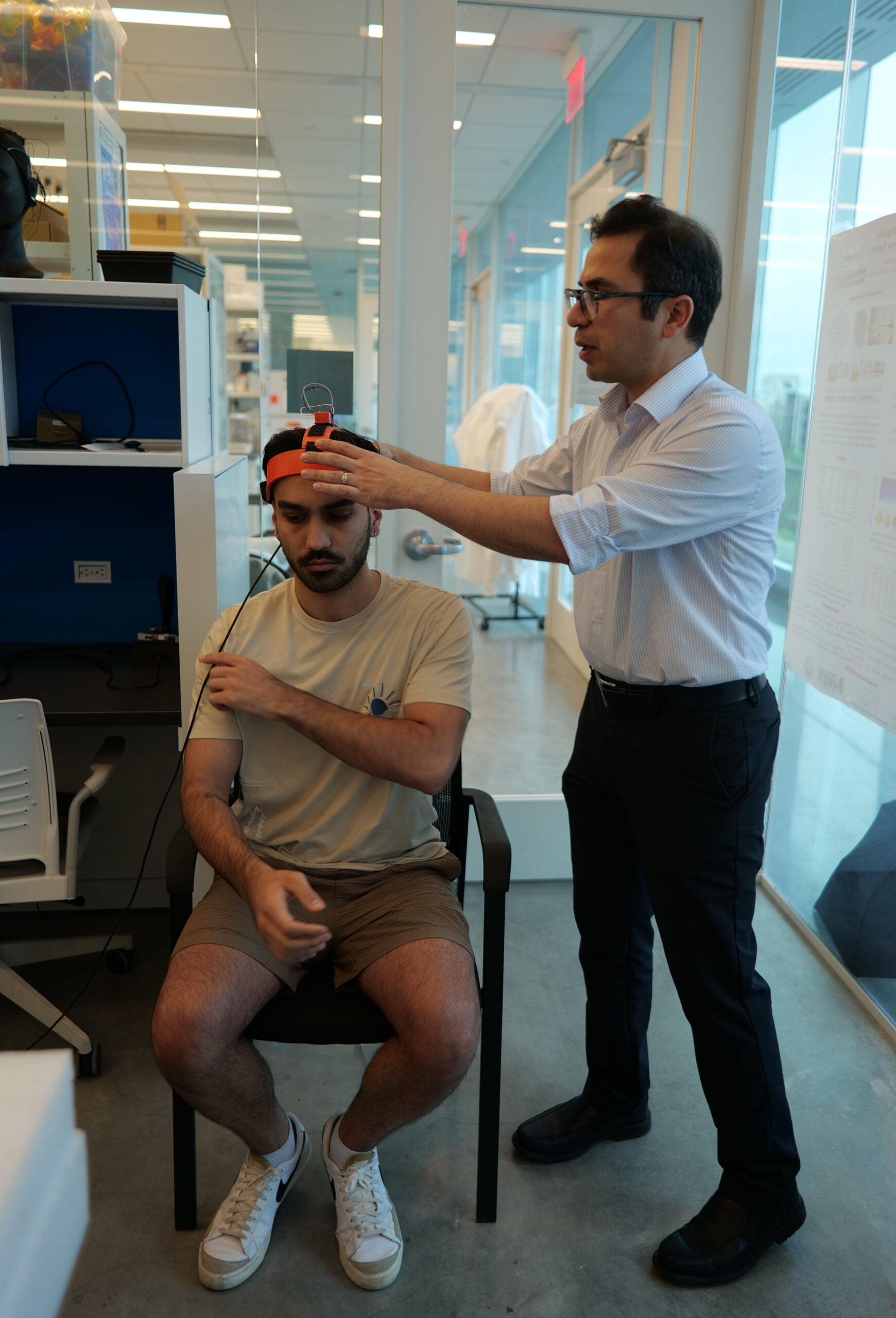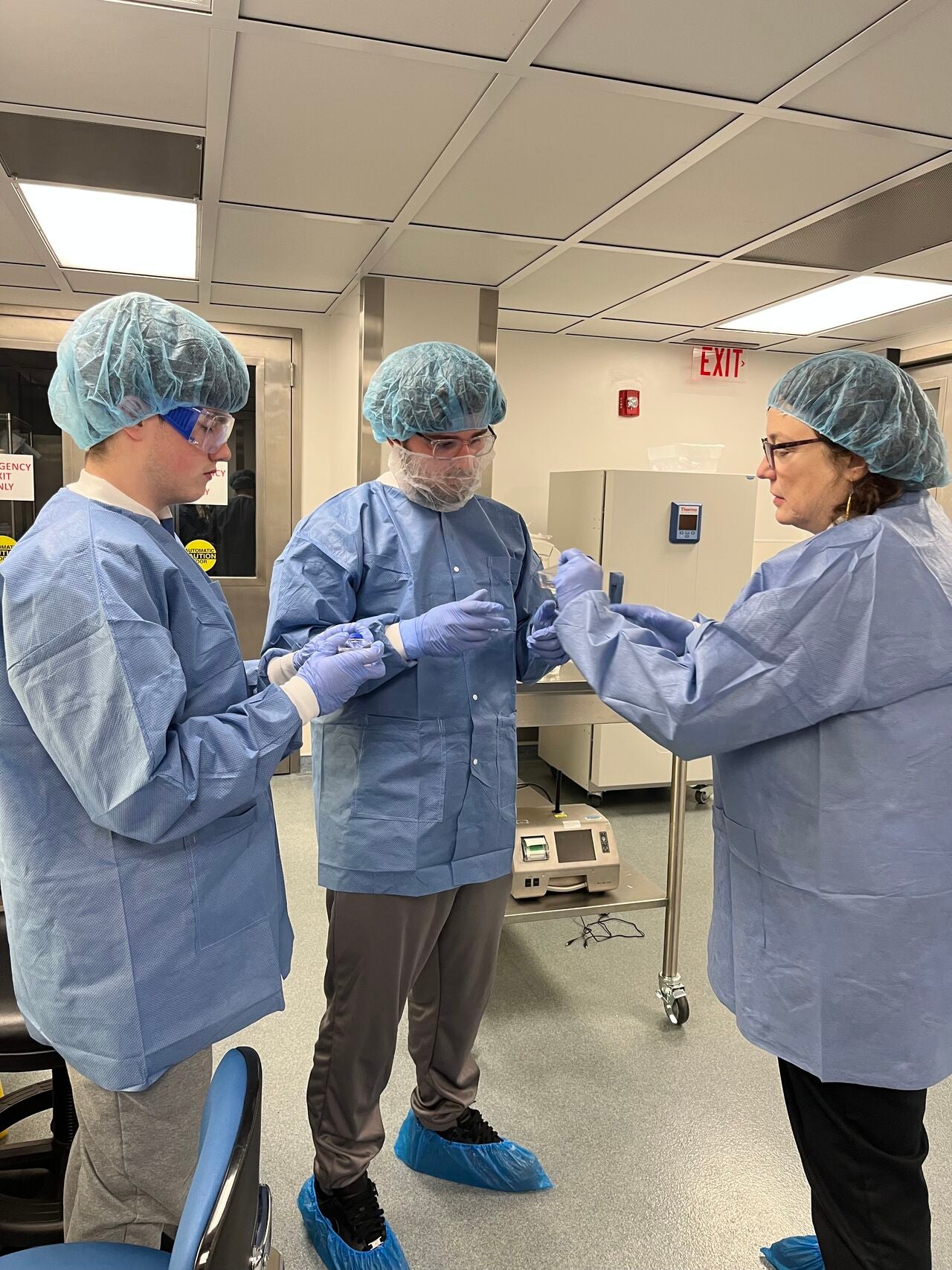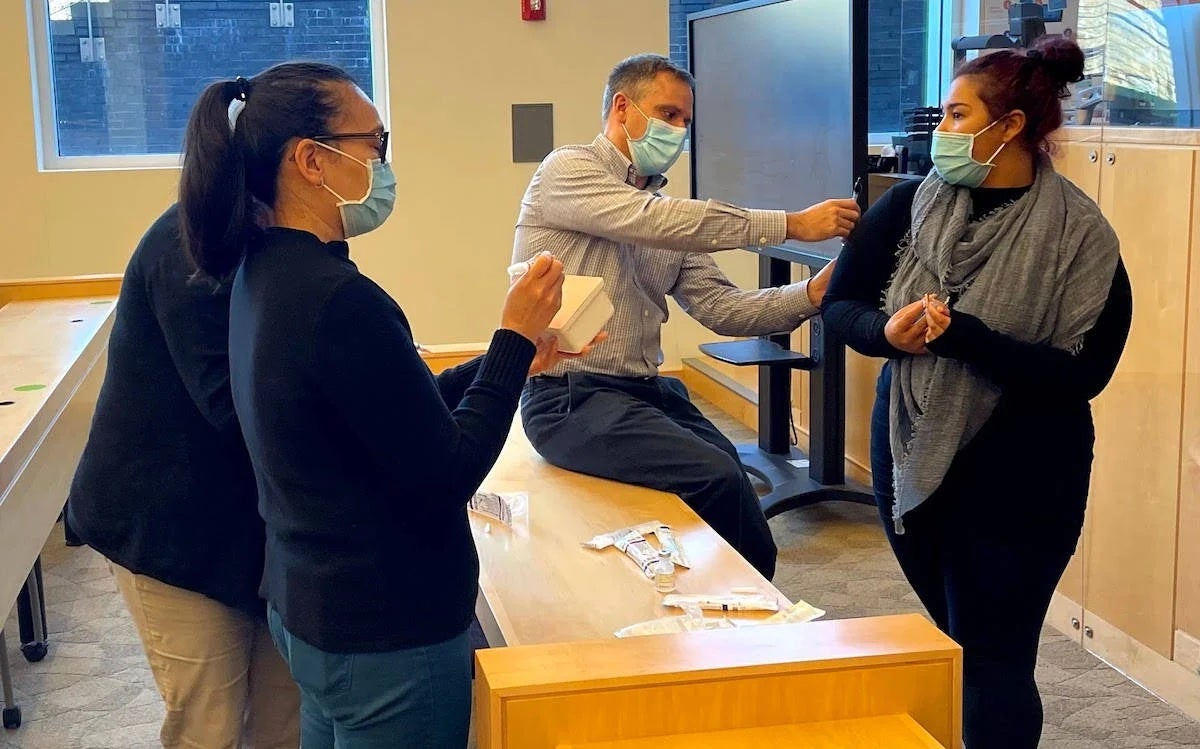Novel discoveries about Eastern Whip-poor-will nesting and chick growth

KINGSTON, R.I. – July 28, 2025 – Known for their haunting, distinctive singing—a repetitive “whip-poor-will” call that echoes through summer nights—Eastern Whip-poor-wills have long inspired folklore, often seen as omens or symbols of mystery. Their elusive, nocturnal nature and expert camouflage make them far easier to hear than to see. Liam Corcoran ’18 M.S. ’25, a recent graduate of the University of Rhode Island’s interdisciplinary Biological and Environmental Sciences (BES) master’s program from Warwick, Rhode Island, is working to demystify this bird through science.
Wild populations have declined precipitously since 1970. Because of their nocturnal activity and cryptic nature, very few researchers have focused on whip-poor-wills’ nesting habits. New research from Corcoran published in The Wilson Journal of Ornithology offers the first published growth data for whip-poor-wills, contributing critical baseline information for future ecological and conservation research.
Extensive video documentation captured and analyzed by Corcoran shows how males and females interact at the nest, regularly conducting a coordinated courtship-like display, and how adult birds engage in active nest defense from potential predators. While there have been past anecdotal reports of female whip-poor-wills potentially singing, Corcoran’s research provides the first video confirmation that females do indeed sing.

Prior to Corcoran’s work, no one had focused on chick growth. Thanks to his efforts, scientists now have a way to estimate chick age based on both measurements and plumage which can help identify the whole history of a nest, from nest initiation to hatching to fledging (when young birds first take flight).
“I hope this research serves as a starting point and that chick growth may be further studied throughout the whip-poor-will breeding range,” Corcoran says. “I also hope the predictive tools that came out of this research prove useful to researchers looking to estimate the age of chicks.”
For this research, Corcoran placed trail cameras at whip-poor-will nests found at three state management areas in Rhode Island–Arcadia, Great Swamp, and Tillinghast–as well as at the Nature Conservancy’s Francis Carter Preserve and the Audubon Society of Rhode Island’s Marion Eppley Wildlife Refuge. He documented unique behaviors of paired males and females, interactions with predators, and chick growth.
“Capturing not one but four female whip-poor-wills singing the male song while on nest surprised me,” Corcoran says. “I was also very surprised to see how much whip-poor-wills perceived slugs and millipedes as potential threats. By far the most fulfilling part of this research was getting to know these birds on such a personal level.”
“I’m happy I was able to capture so many interesting and unique behaviors on the trail cameras,” he adds, “like a courtship-like display that males and females regularly engage in at the nest and females singing while on nest.”

Known for their distinctive singing, Eastern Whip-poor-wills’ nocturnal nature and expert camouflage make them easier to hear than to see. (Megan Gray)
After earning an undergraduate degree in wildlife and conservation biology, Corcoran continued to work in Professor Scott McWilliams’s lab and assist in conducting fieldwork.
“While working as a field technician with the Rhode Island state herpetologist at the Division of Fish and Wildlife, an opportunity to apply for a graduate position in Professor McWilliams’ lab came about and I decided to give it a shot,” Corcoran says. In August of this year, he completed his M.S. in the Ecology and Ecosystems Science concentration of the BES program.
For this research, Corcoran worked with McWilliams and Megan Gray, also a master’s student in BES.
“I have dreamed of working with this species since I saw my first whip-poor-will,” Corcoran says, “and it was an absolute privilege to be able to see the inner workings of how whip-poor-wills behave around the nest and rear chicks.”
This story was written by Anna Gray in the College of the Environment and Life Sciences.
Latest All News
- Navigating health careIf you’ve had to find a primary-care provider or pay a medical bill lately, you know that accessing and paying for health care can be difficult. But why? How can we get the care we need?
- URI to host RI-INBRE Summer Research Symposium Aug. 1KINGSTON, R.I. — July 29, 2025 — About 200 students from 10 institutions across Rhode Island will present more than 100 biomedical research projects they’ve spent the summer studying, as RI-INBRE hosts its 21st annual Summer Undergraduate Research Symposium on Aug. 1. The Rhode Island IDeA Network of Biomedical Research Excellence program started in 2001, […]
- Head of URI’s Chinese language program new president of national teachers’ associationKINGSTON, R.I. – July 29, 2025 – Yu (Joyce) Wu, director of the Chinese Language Flagship Program and Chinese section head at the University of Rhode Island, has been elected president of the Chinese Language Teachers Association, USA, the largest professional organization devoted exclusively to the study of the Chinese language, culture and pedagogy. Wu, […]
- URI engineering professor recipient of NSF CAREER Award for assistive rehabilitation researchKINGSTON, R.I. – July 29, 2025 – Severe motor impairment such as paralysis and degenerative conditions can limit a person’s ability to perform certain dexterous tasks. Currently, there are technological advancements that can aid in restoring some of this ability, but they can be invasive, requiring surgical implants that create drawbacks. University of Rhode Island […]
- New graduate certificate in cell and molecular biology aims to fill needs in field while offering career advancement opportunitiesKINGSTON, R.I. – July 23, 2025 – Molecular biology, biomedical sciences, laboratory medicine, and biotechnology are among the most challenging and exciting scientific fields of the 21st century. These disciplines are at the forefront of efforts to overcome global public health challenges such as heart disease, cancer, and infectious disease. The University of Rhode Island’s […]
- URI College of Pharmacy trains pharmacy technicians to administer vaccinesKINGSTON, R.I. — July 23, 2025 — This summer, University of Rhode Island College of Pharmacy faculty and staff members are continuing their efforts to help fight communicable diseases through a training program on the Kingston Campus that teaches pharmacy technicians to administer vaccines. Originally developed by Washington State University and revised through a partnership […]












